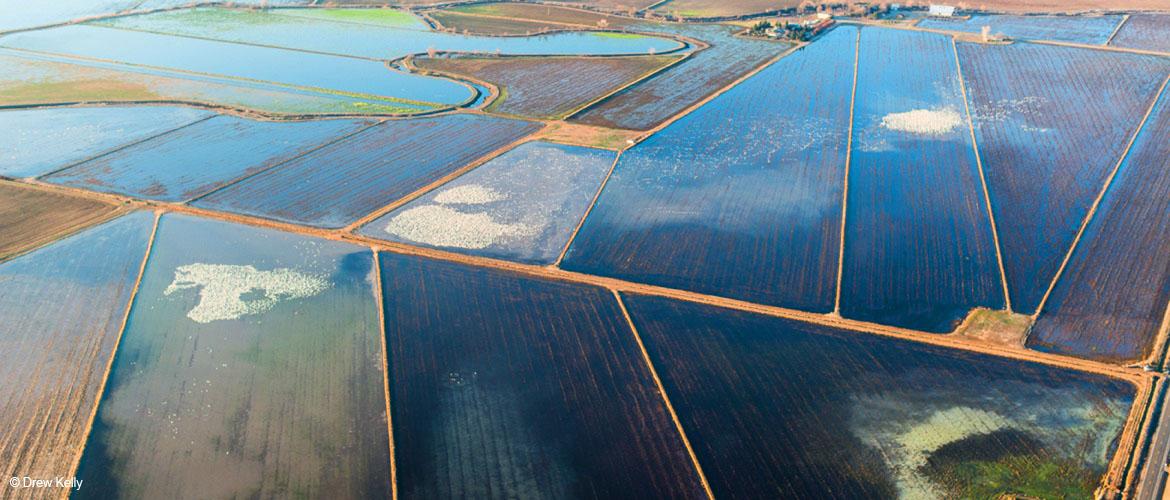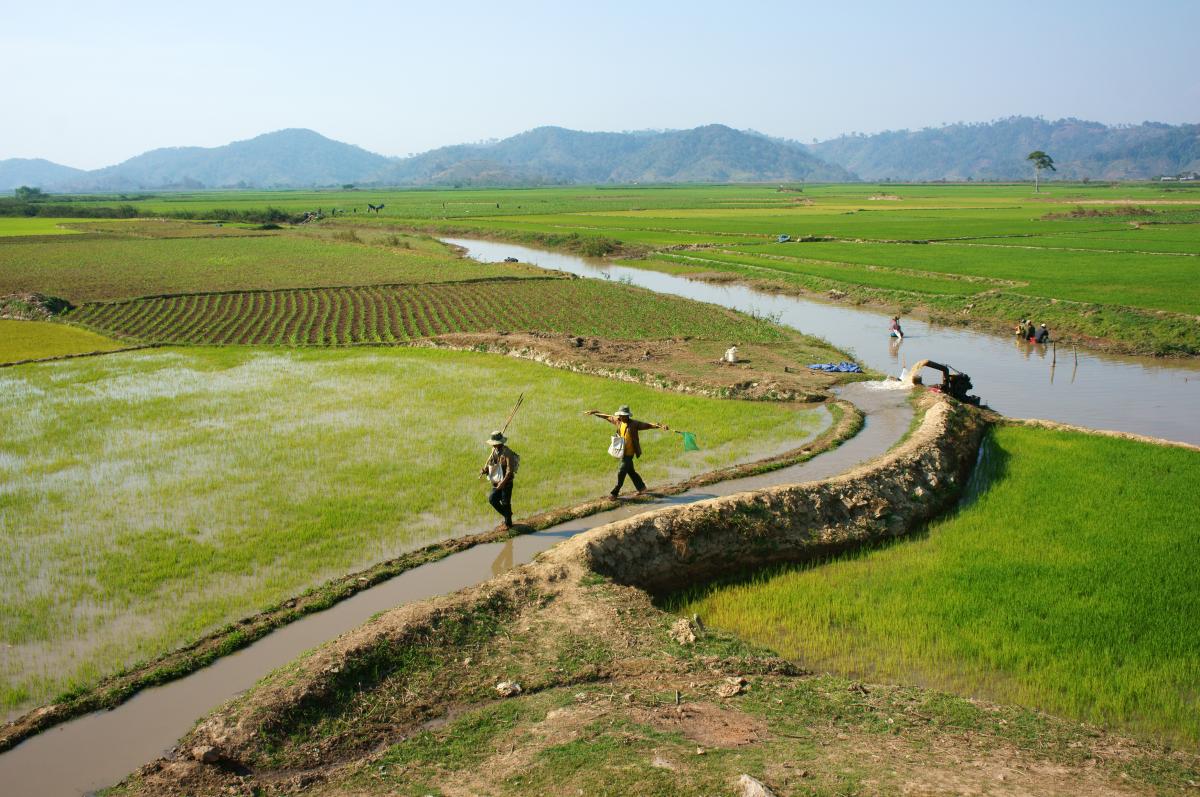California in Focus: Keeping Groundwater in Mind
California in Focus: Keeping Groundwater in Mind
Ongoing drought in California has people keeping an eye on water resources and asking the question, “How can I conserve more water?” Surface water reservoirs, such as lakes and rivers, have been the focus of most water conservation efforts, while a central building block of ecosystem resilience lacks awareness: groundwater.
Preserving groundwater is key for food security and sustainable ecosystems. Researchers have found that, on a local level, groundwater pumping and irrigation have strong negative impacts on long-term water supply. Out of sight and often, out of mind, groundwater management can either help or hinder our ecosystem’s ability to withstand climate change.
How much do we rely on groundwater?
In the United States, we depend on the shrinking groundwater supply to meet half our water needs. As drought diminishes lakes, rivers, and reservoirs, we rely on groundwater even more. Since 2014, only 25 percent of California’s water supply came from surface water. The other 75 percent was pumped from the ground. Similar to lakes and rivers, rain and melted glacier water refill groundwater reservoirs, but this process is much slower.
What are the effects of drought?
During drought the depth at which groundwater is found below the surface drops as water is pumped from the ground faster than it can be replenished. With overpumping, the water balance in nature becomes disrupted: ecosystems, such as wetlands, dry up and cannot support wildlife. This unsustainable treatment of water costs users, too. In 2014, Central Valley wells that had water at 500 feet must now go down 1,000 feet or more. That can cost farmers and other well users more than $300,000 for a single well.
Using groundwater causes land to sink and shrinks groundwater storage space. As groundwater depletes, the land begins to sink to partially fill the space left behind by the absent water. From 1960 to 1970, some areas had sunk about 30 feet. As a result, the state spent more than $1 billion repairing sinking bridges, cracking canals, and buckling highways. The sinking began again in 2008, with farmland dropping at a record pace. In addition, the sinking process shrinks the space below ground, making the capacity for underground water storage smaller. As a result, it cannot hold as much water to help in the next drought or soak in the next flood.
What Affects Our Water?
California drought is partially a result of climate change. Research says as much as 27 percent of the drought can be attributed to it. Warmer average temperatures steal moisture from California's water budget. As temperatures continue to rise, they take more and more moisture away.
Agriculture uses 80 percent of California's water budget. About 6 percent of the state's water is consumed by industries, commercial operations, and governments. The remaining 14 percent is residential use.
Some farms use very inefficient forms of irrigation. Nearly 50 percent of irrigated land in California still uses flood-and-furrow irrigation, in which fields are covered by standing water. 43 percent of California farmland in 2010 had an imprecise irrigation method that used relatively large amounts of water. Each year, outdated irrigation systems across the U.S. can leak up to 80 percent of the water they attempt to transfer to thirsty crops.
In urban setting lawn watering increases water use. Urban residents consume an average of 178 gallons of water per day because half of California’s urban consumption is for landscaping.
What can we do?
Improving irrigation is a big opportunity for groundwater conservation. Properly equipping farmers and local government organizations may decrease the demand for groundwater pumping and conserve water. New technologies make water-efficient irrigation possible for almost any crop. For example, tractors guided by GPS systems can work crops without touching drip lines, which is one of the most effective irrigation options.
A big barrier to any improved irrigation system is cost: $1,000 to $3,000 per acre. Addressing this challenge with modernized irrigation systems is just one of the innovative solutions the BEF Water Restoration Certificate® program supports. As a result, irrigators pump less water from the ground, thus reducing the depletion of water that can benefit dewatered ecosystems. Funding from BEF Water Restoration Certificates® supports a range of projects that enhance or restore flows and water to benefit critically dewatered sections of rivers, streams and wetlands. For example, by working collaboratively with farmers in California’s Central Valley, BEF directly supports projects that create a water and wetland lifeline for hundreds of thousands of migratory birds while providing an important new revenue stream for rice growers.
BEF Water Restoration Certificate® program projects also help with groundwater recharge by supporting projects that restore flow to wetlands. Wetlands function as natural sponges that trap water from streams, rain, snowmelt, and floods. Then, wetlands slowly release water to help keep water sources going throughout the dry season. A remarkable example is the restoration of many wetland meadow ecosystems in California’s Sierra Nevada Mountains, which will help to maintain stream levels and support habitat for trout, birds, and other wildlife. Apart from that, BEF also helps people put their water rations towards restoring water to rivers and streams without giving up their valuable water rights forever. Find out more on our website.
On a personal level, everyone should improve water efficiency and their water footprint in the home. Here are simple steps you can take: upgrade appliances, switch to alternative lawns, and collect rainwater. We provide these and other tips in our blog.
No matter where you are, take steps to reduce your impact on the environment. It will help mitigate the 27% of California drought caused by climate change. See our blog for tips on reducing your carbon footprint and visit our website to offset what you can’t reduce. Help our projects restore the balance.
How are you reducing your impact and saving water? Share your thoughts on our Facebook page. Follow us on Twitter and Pinterest for more sustainability tips. Visit our website to find out more about your carbon footprint.





